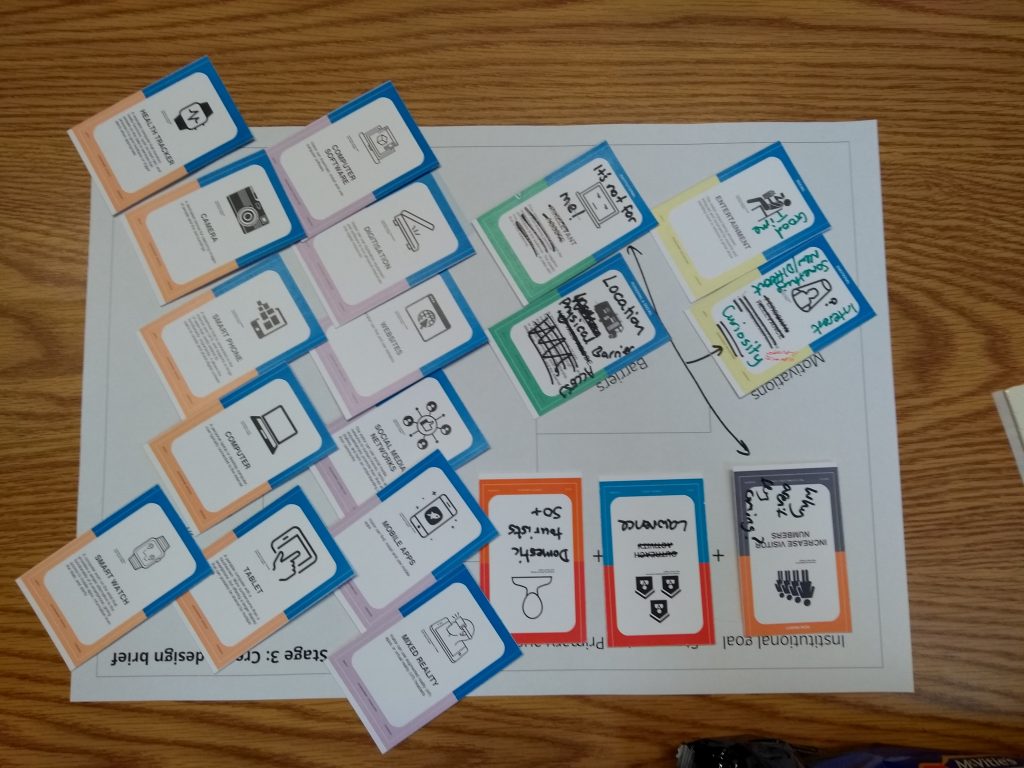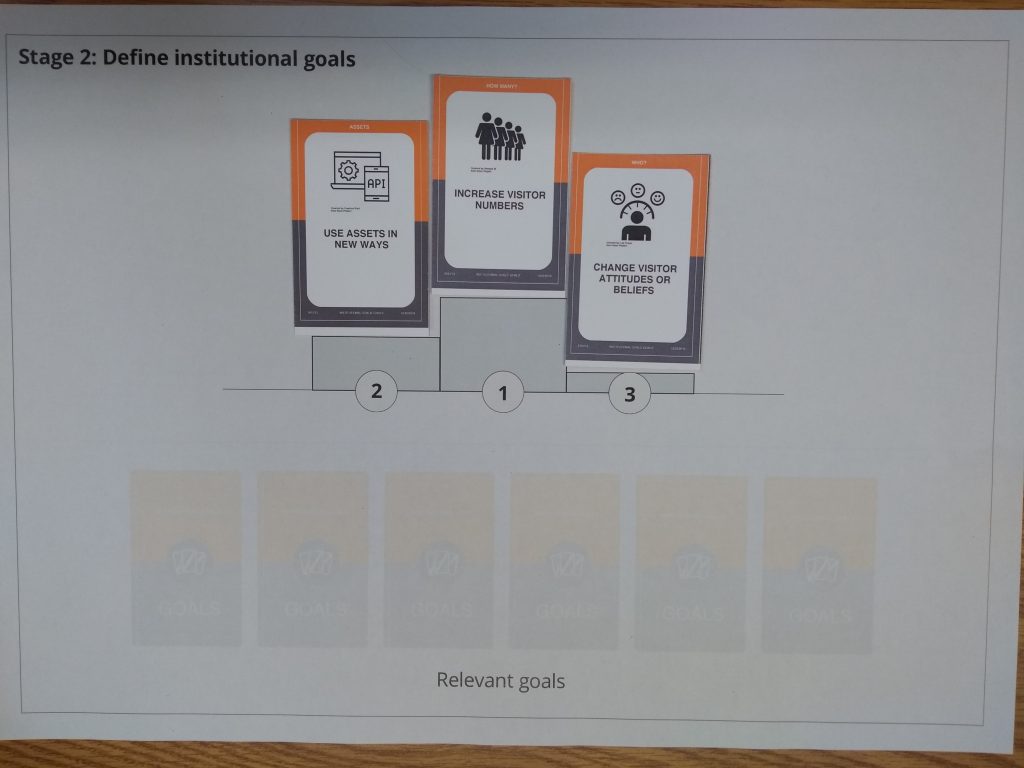In this round, the team looks back at the results of rounds 1 and 2, then takes elements of these forward in the form of a design brief. The design brief will be used in rounds 4-5 to check that they’re coming up with appropriate/feasible ideas.
Cards used
Stages
- Choose a Goal to design for (from the top 3 identified in round 2)
- Choose an Asset that can be used to achieve the goal (from those identified in round 1, or a new one if necessary)
- Choose an Audience that can be involved to achieve the goal (from those identified in round 1, or a new one if necessary)
- Add characteristics to the audience
- Shuffle the Motivations cards, work through one-by-one, and retain the top 2 motivations for that audience to visit the museum
- Shuffle the Barriers cards, work through one-by-one, and retain the top 2 barriers preventing that audience from visiting the museum
- Shuffle the Capabilities cards, work through one-by-one, and keep those representing the audience’s technical capabilities
- Mark capabilities that the audience could teach others
- Shuffle the Devices cards, work through one-by-one, and keep those devices that audience has access to
- Mark devices that audience brings to the museum
- That’s the brief (i.e. the constraints for the design)

